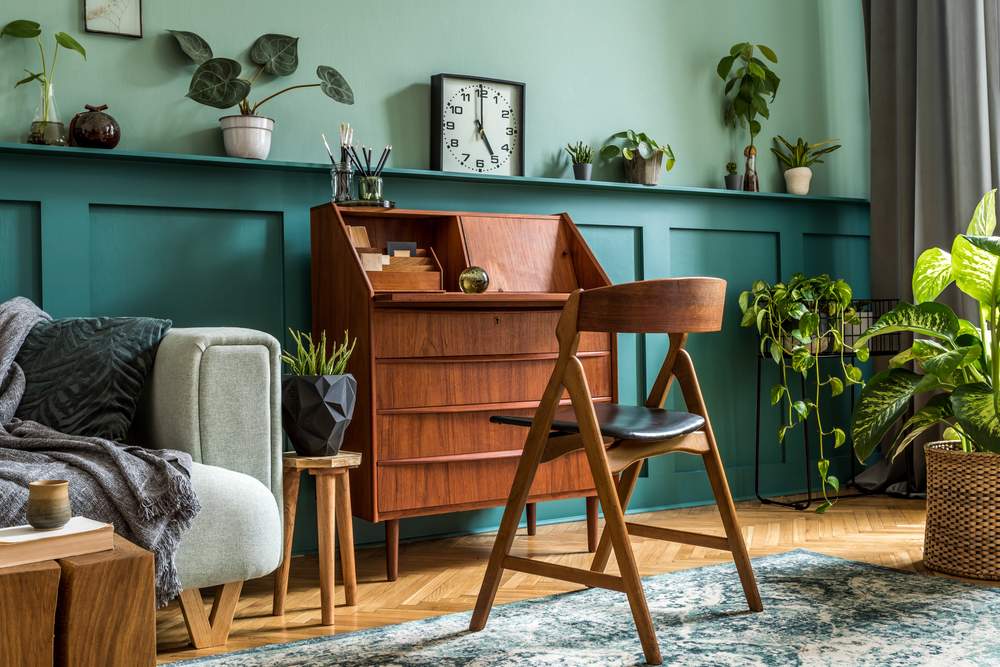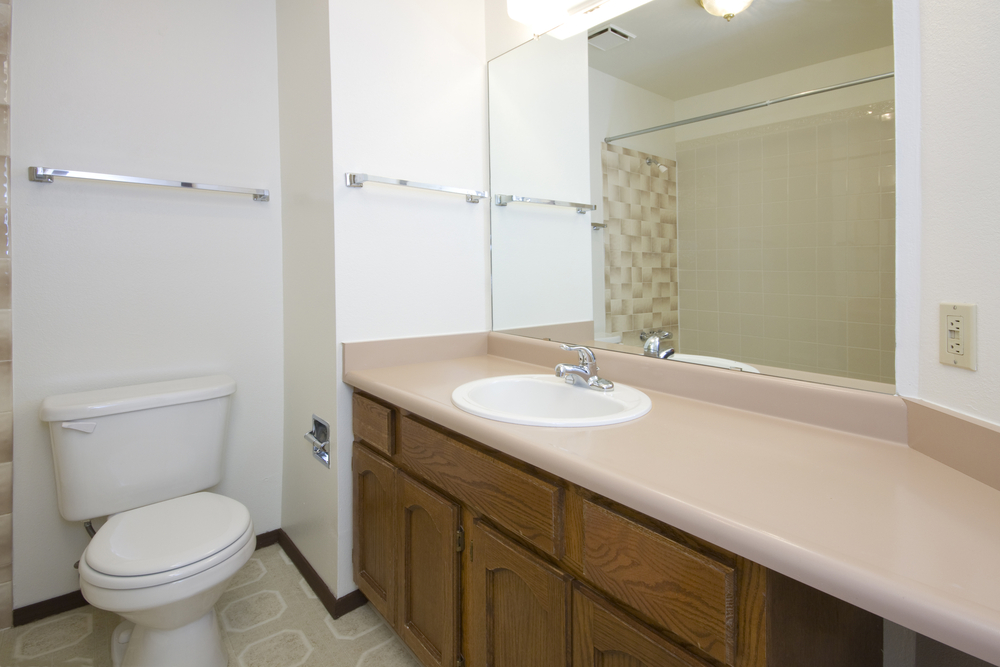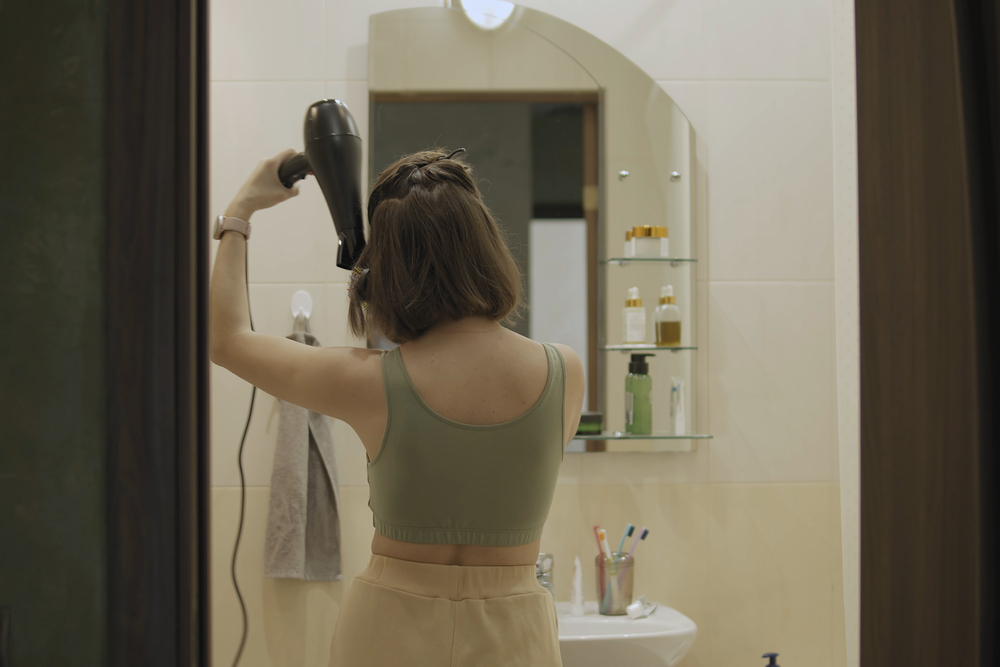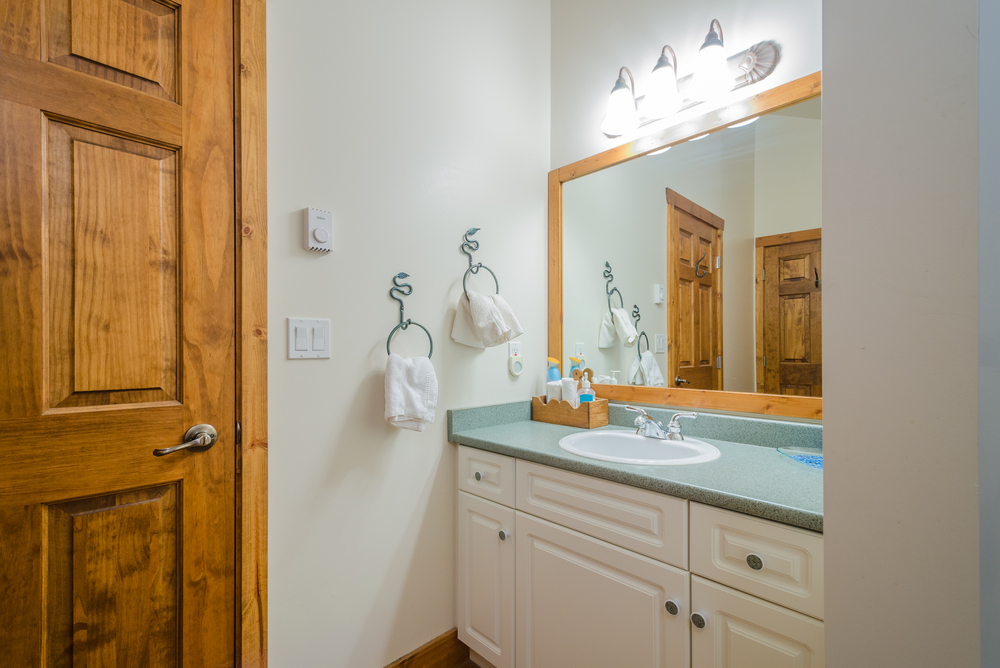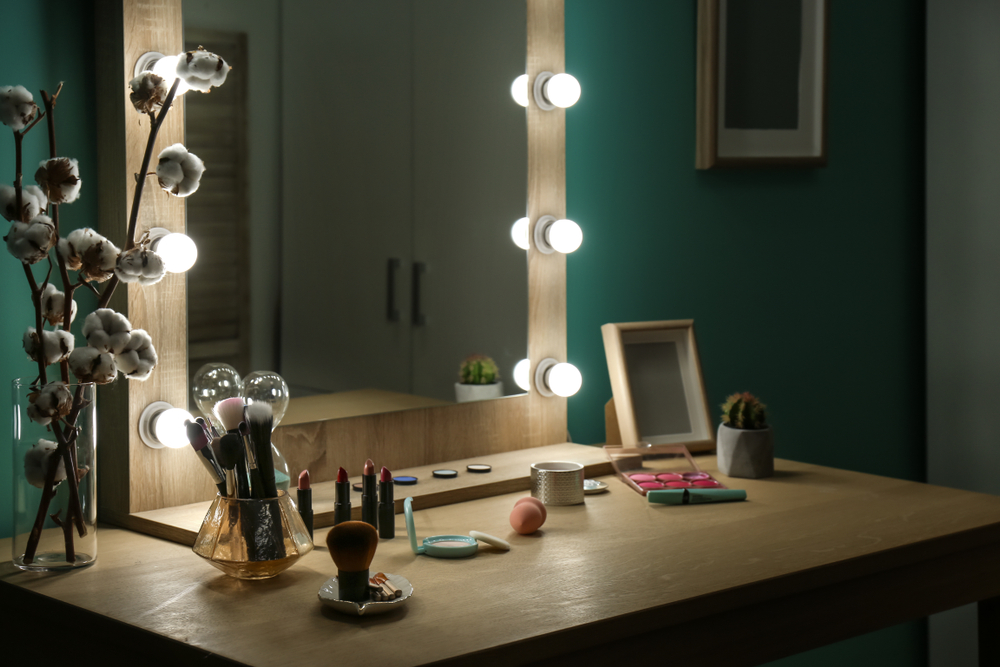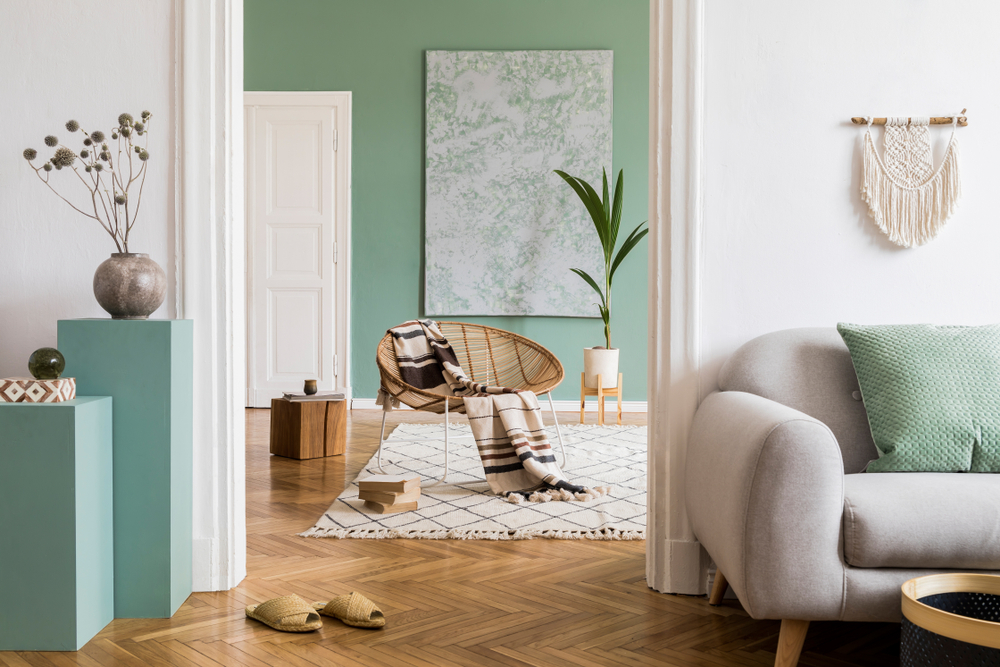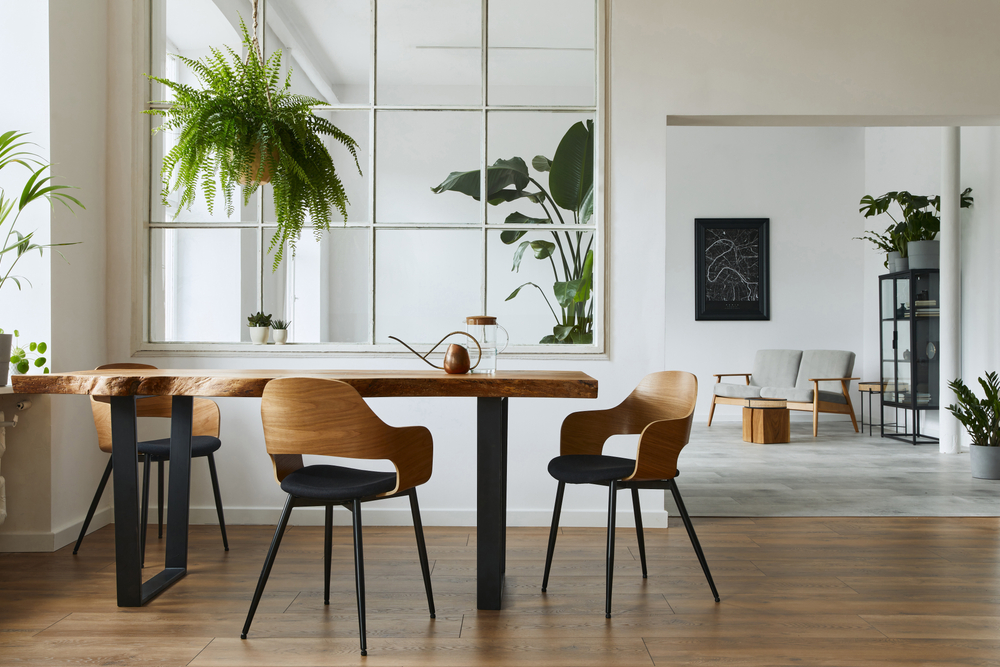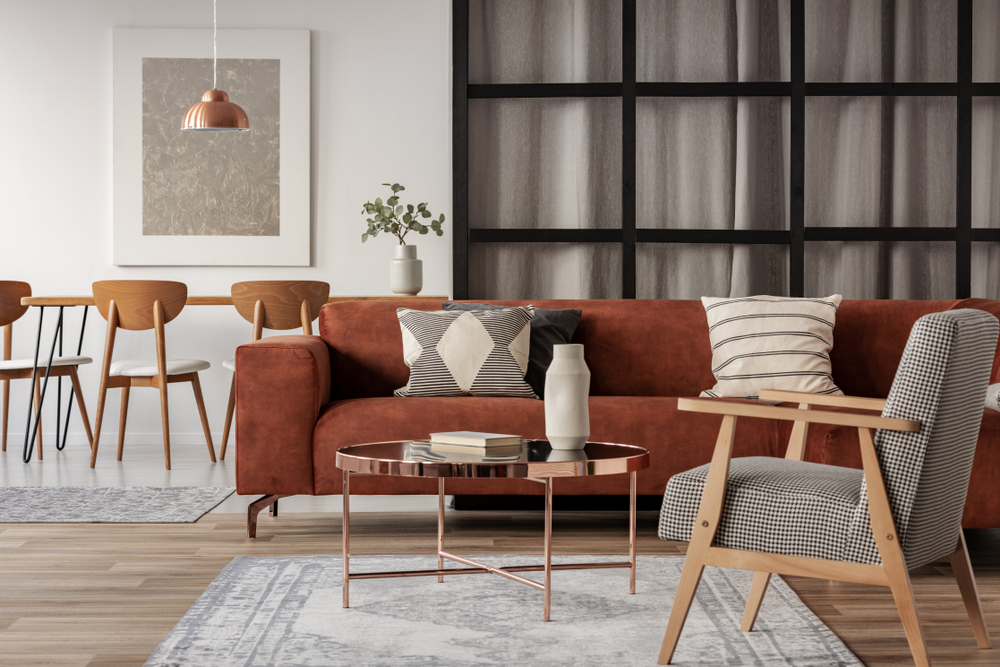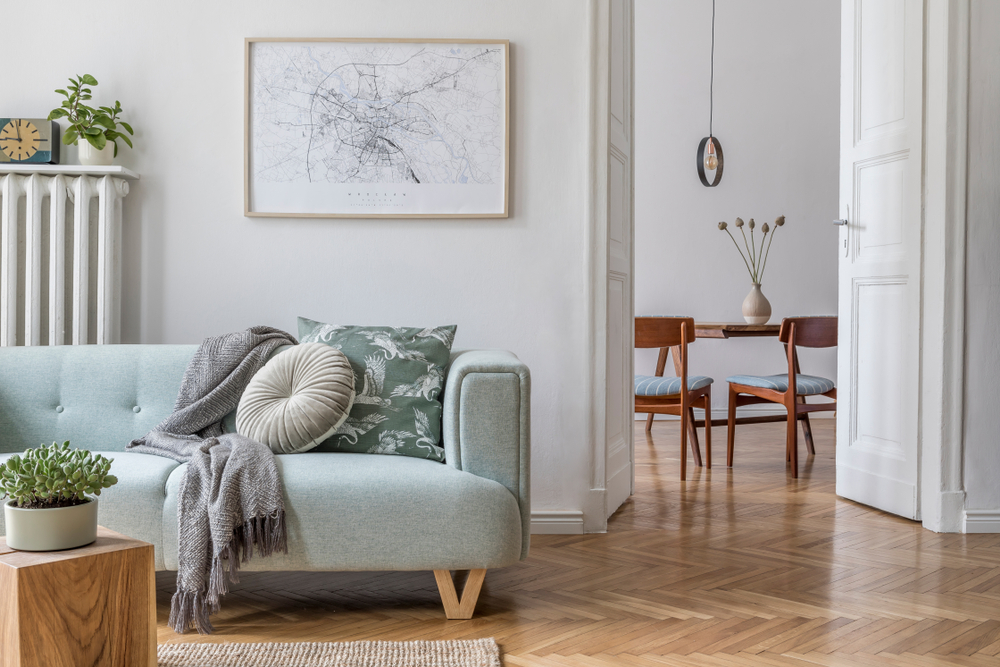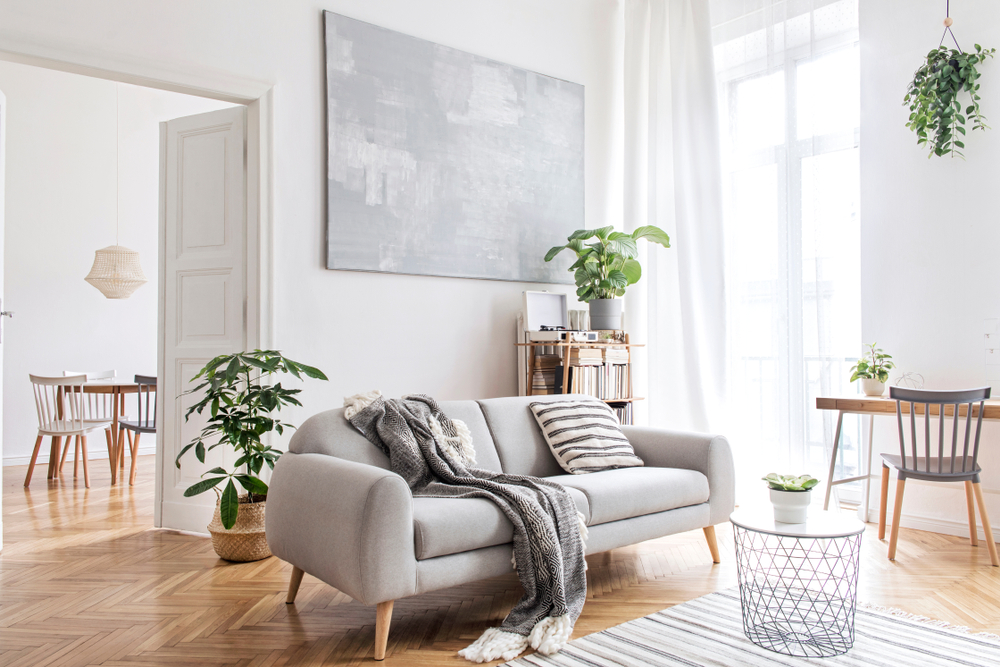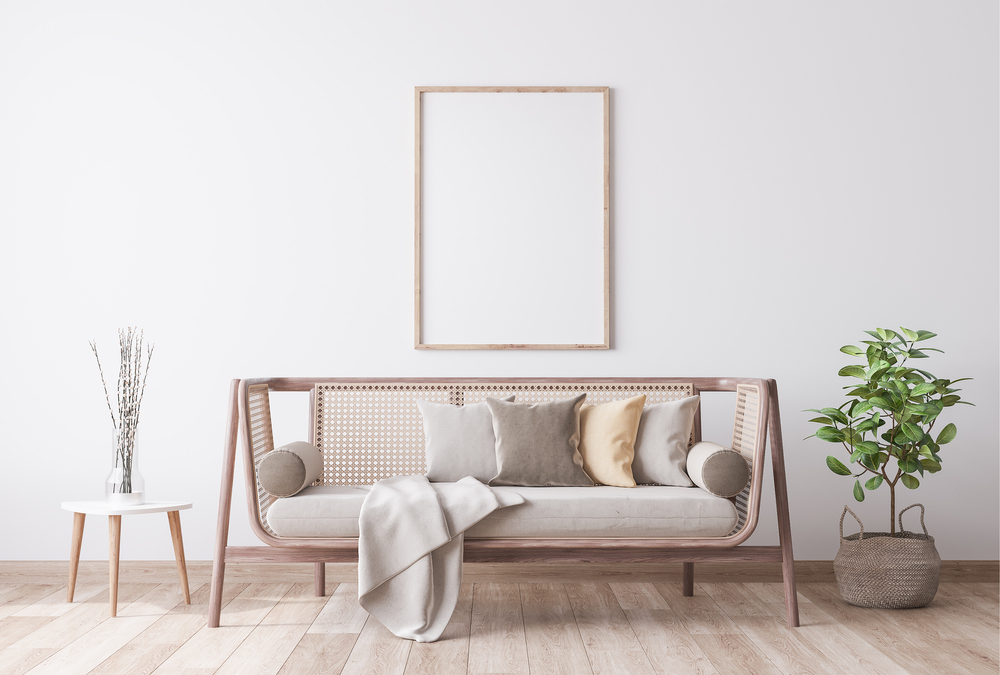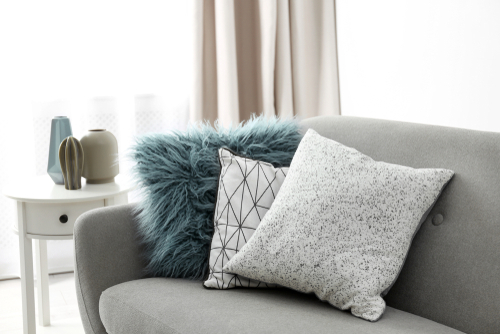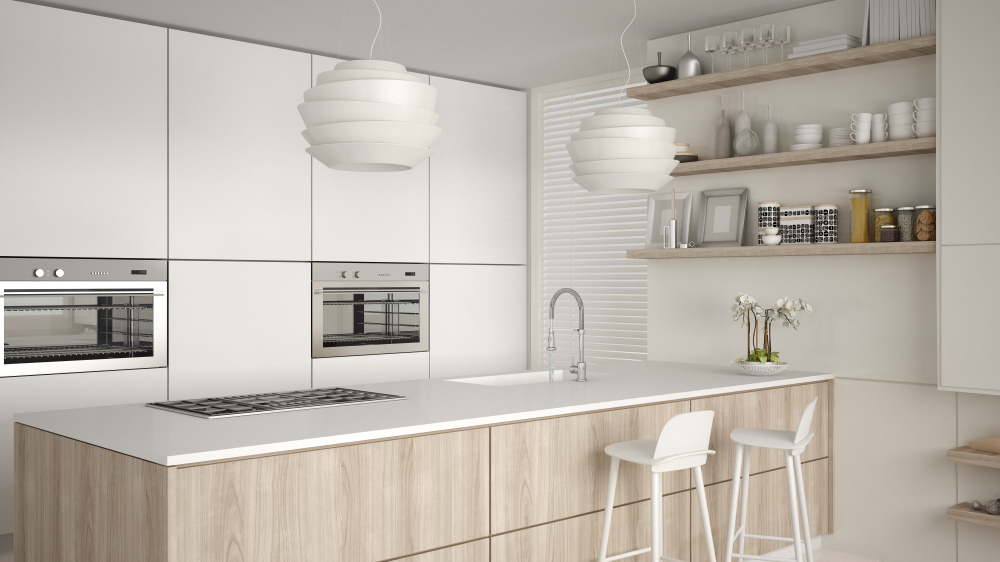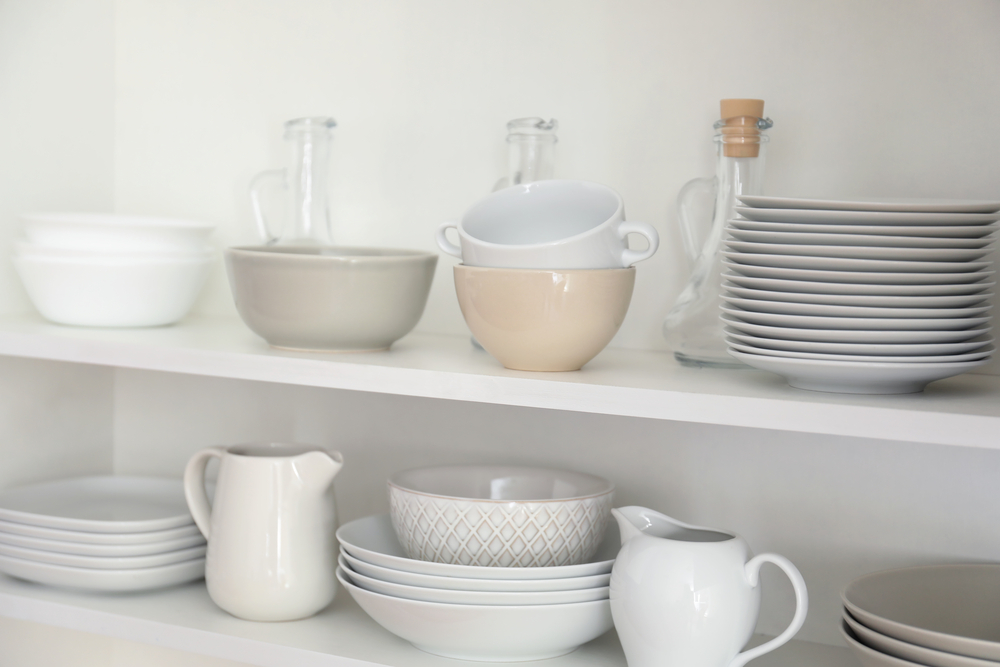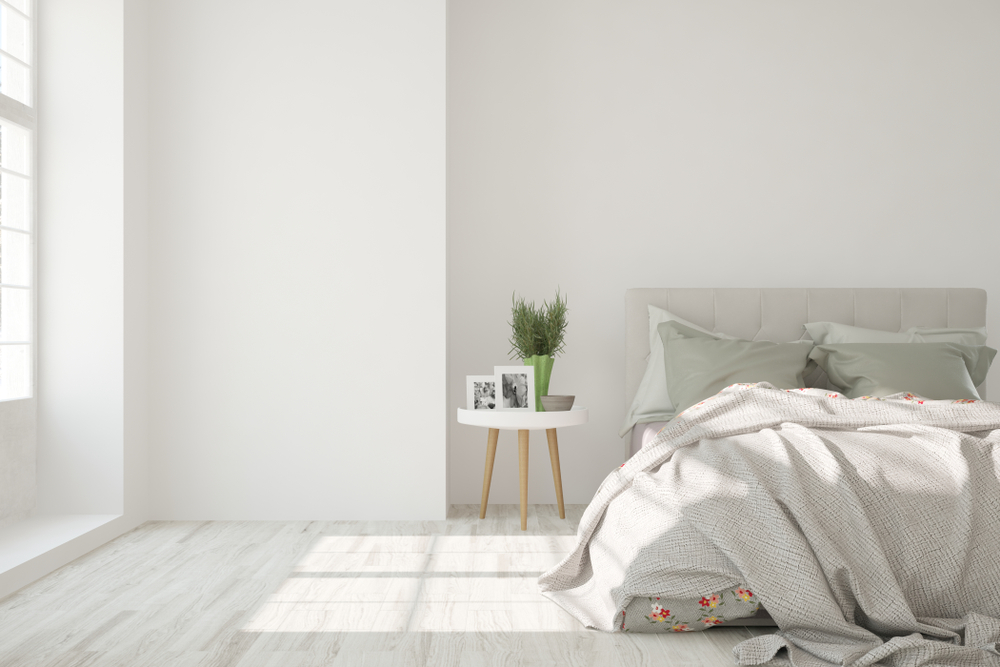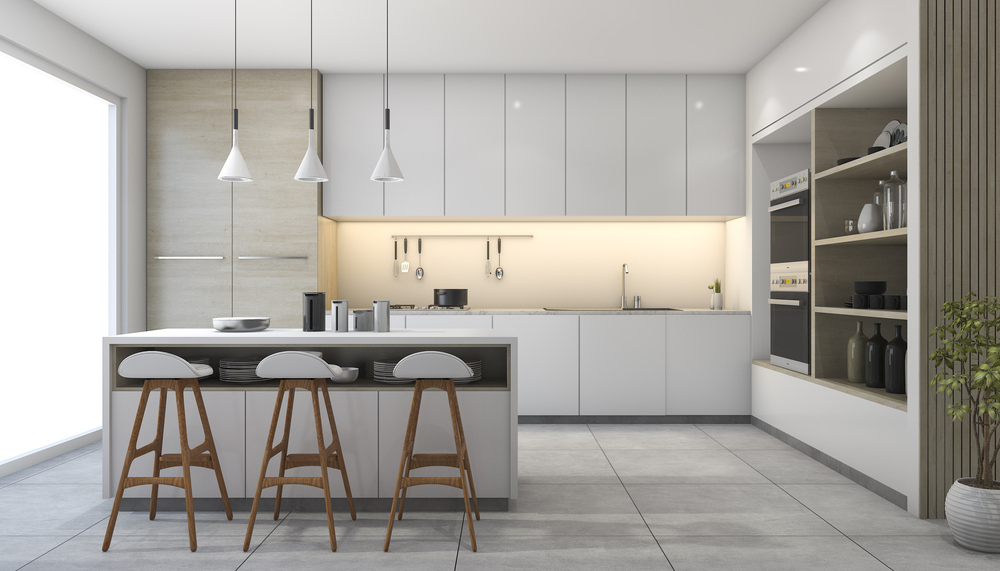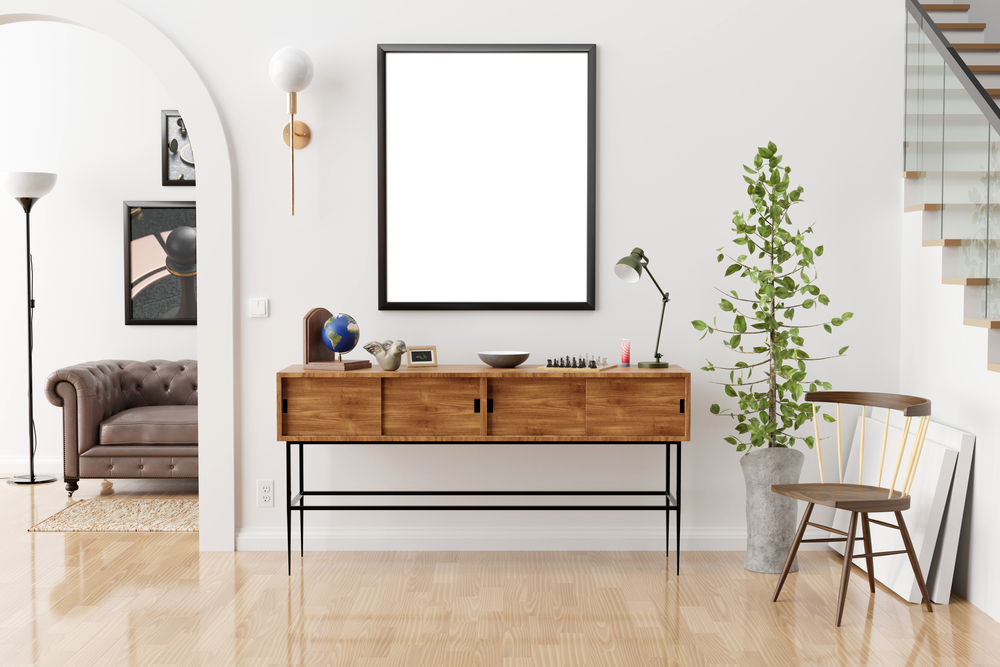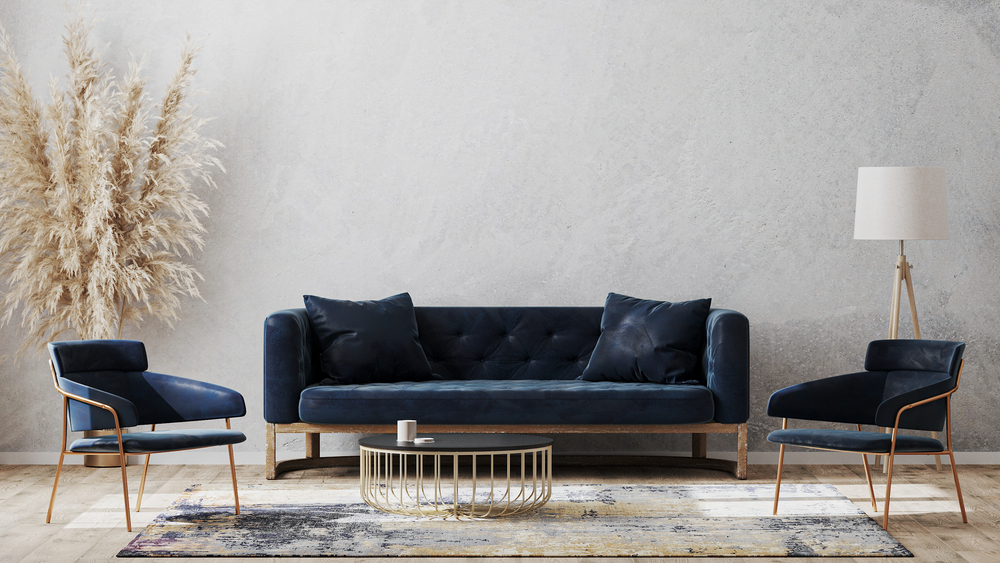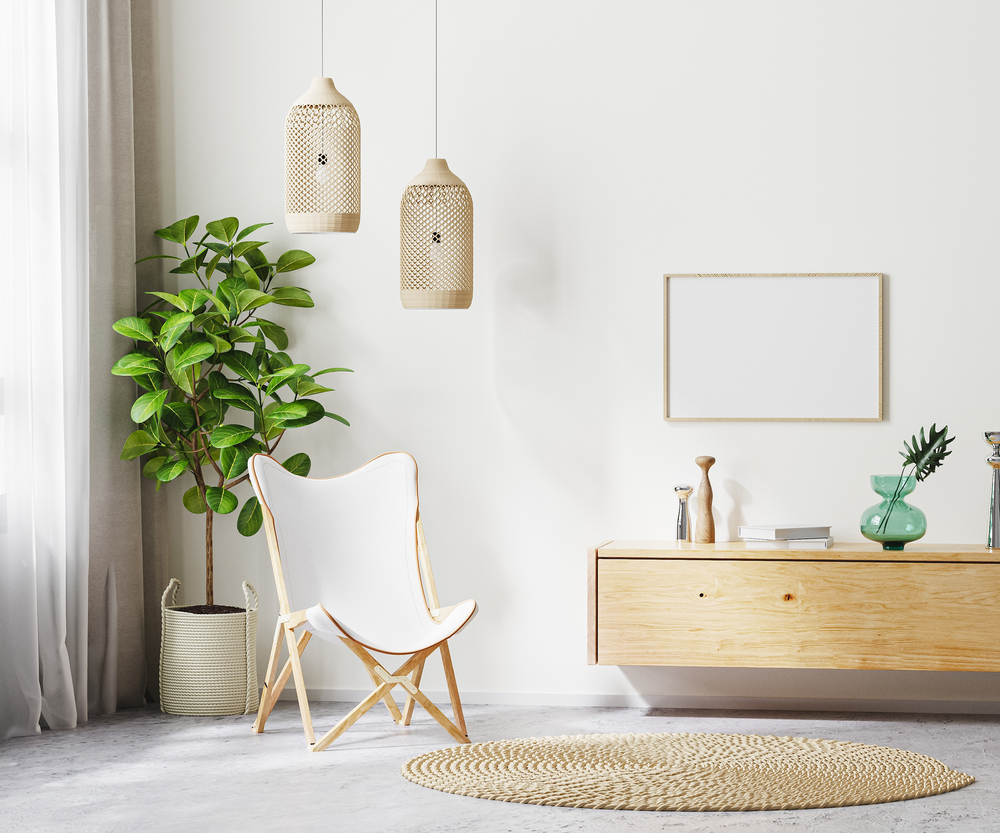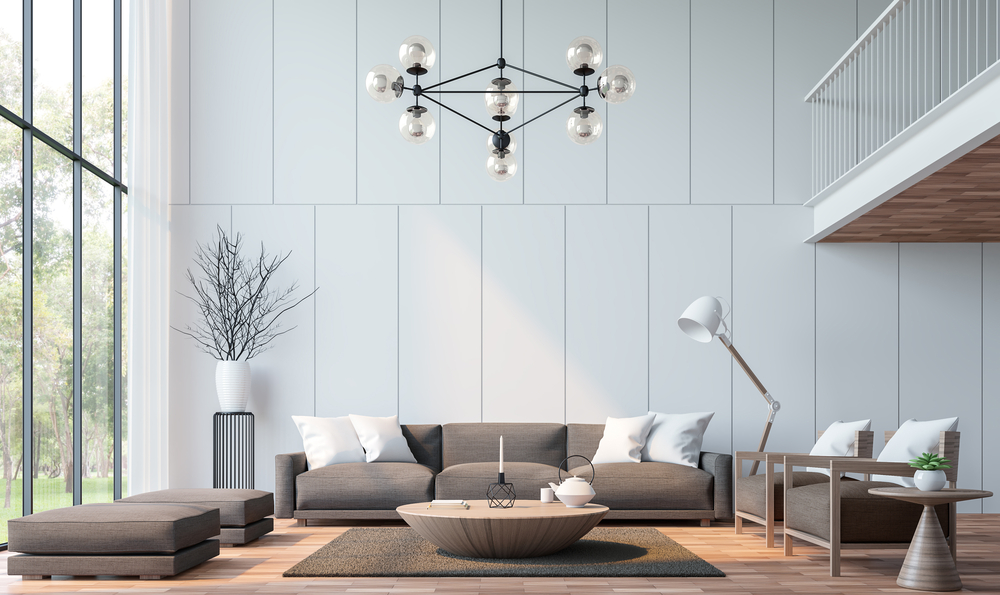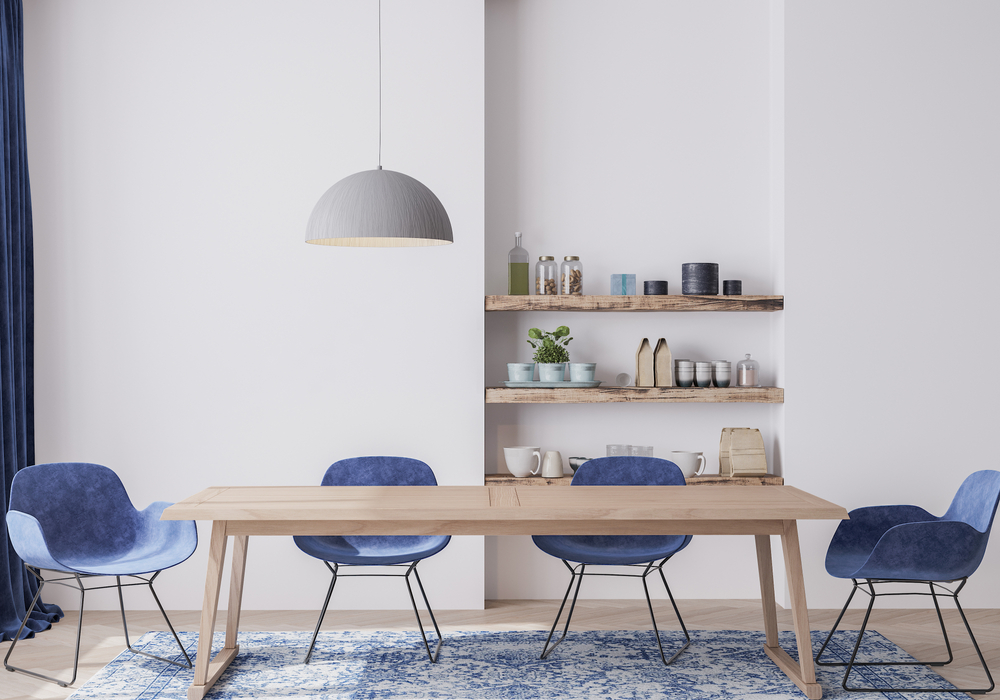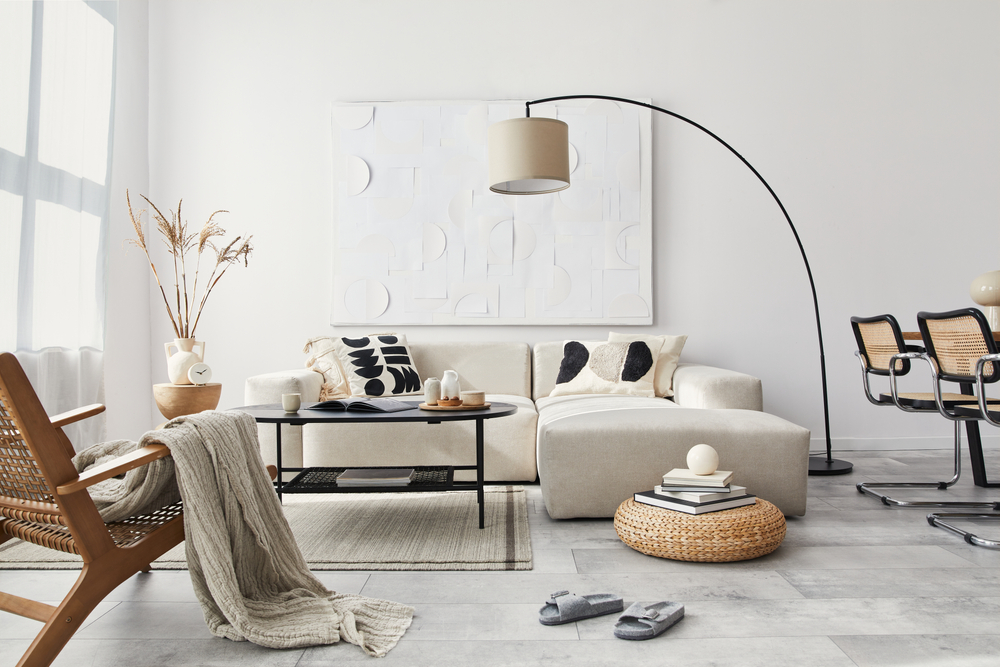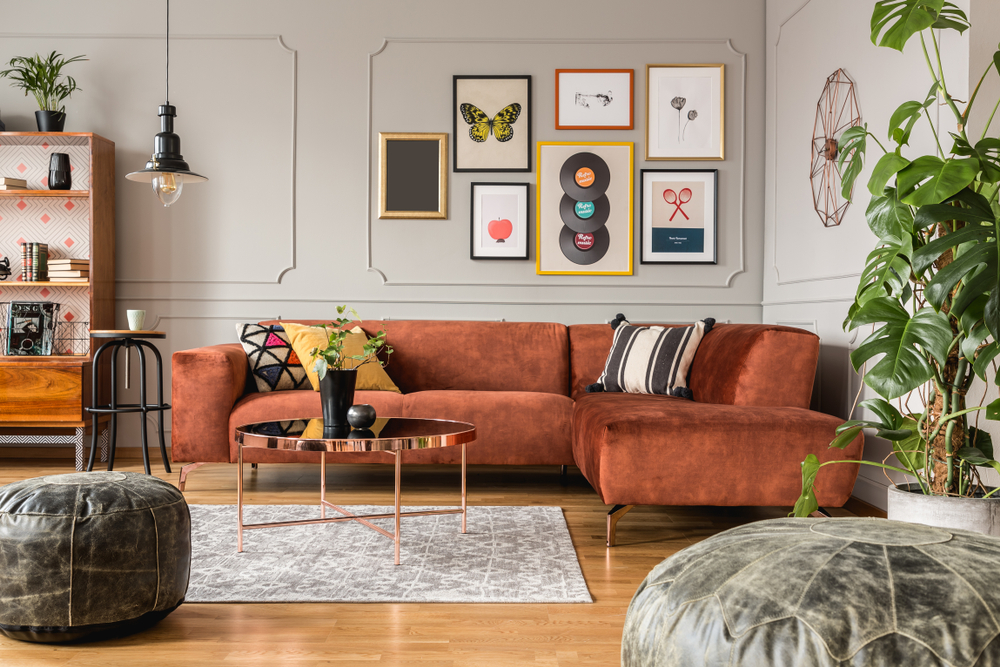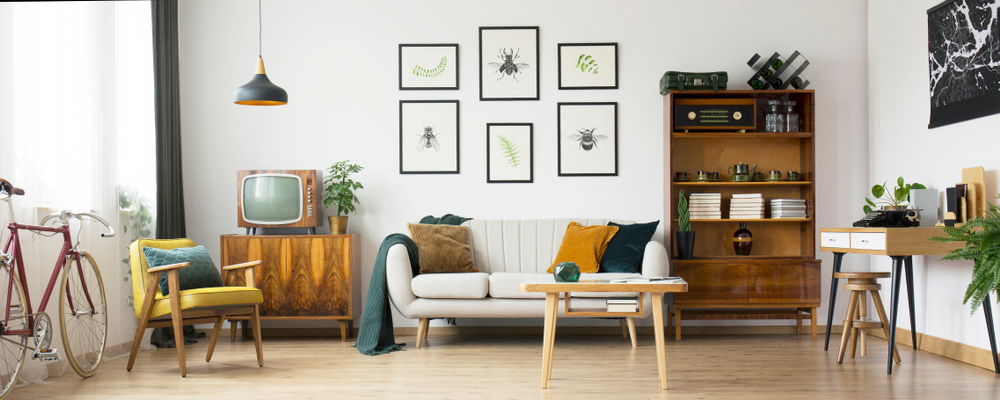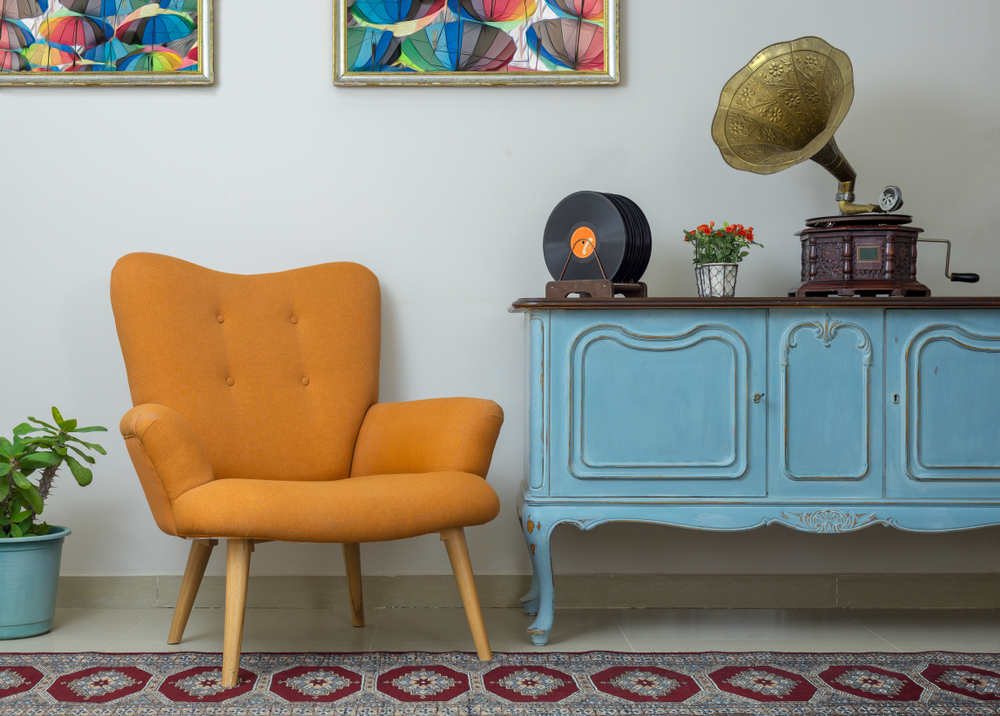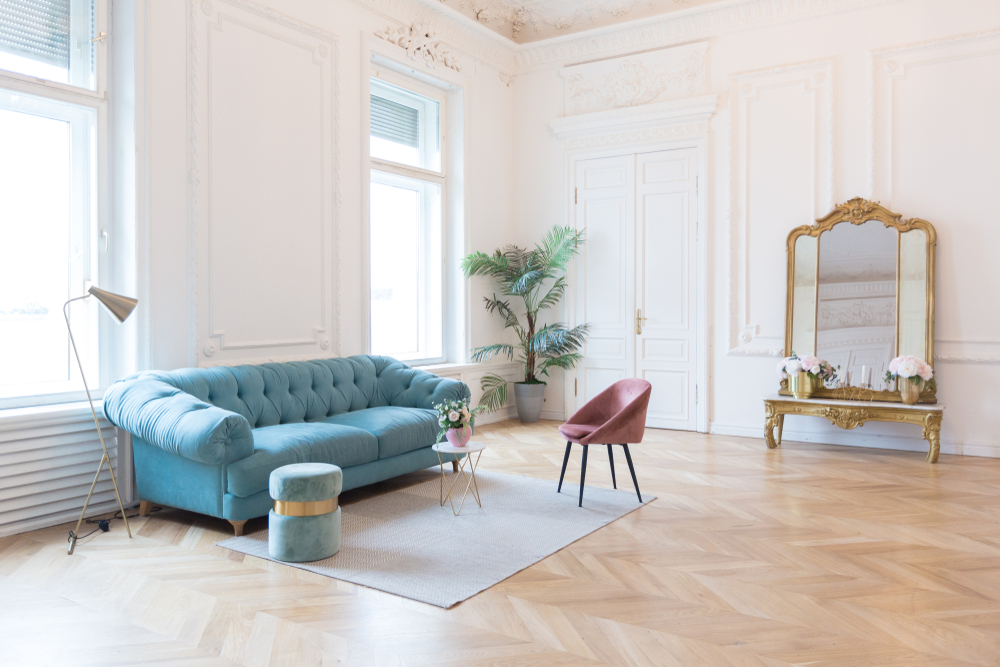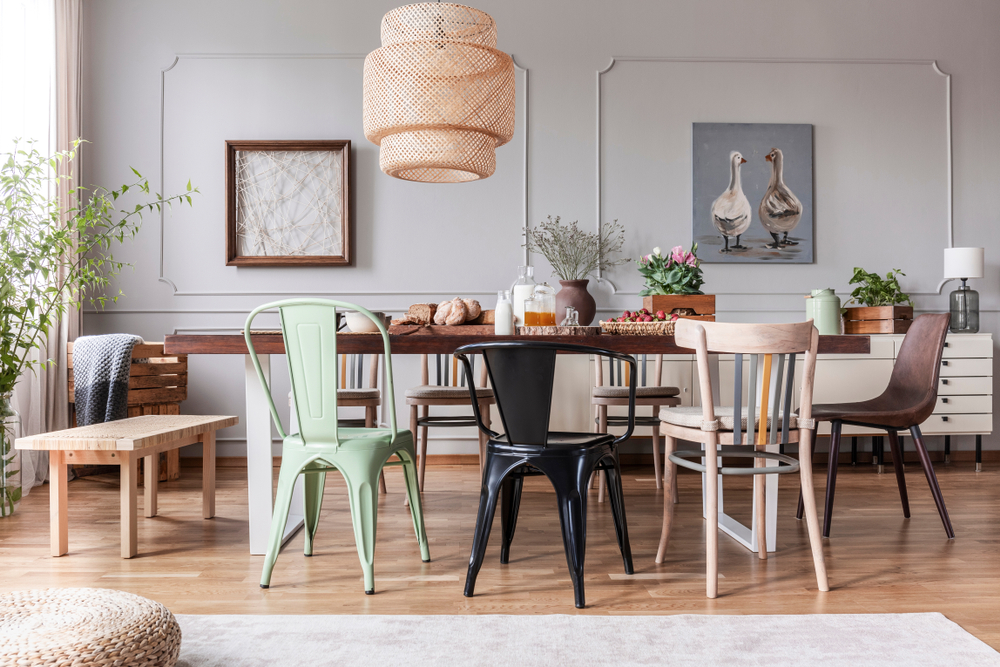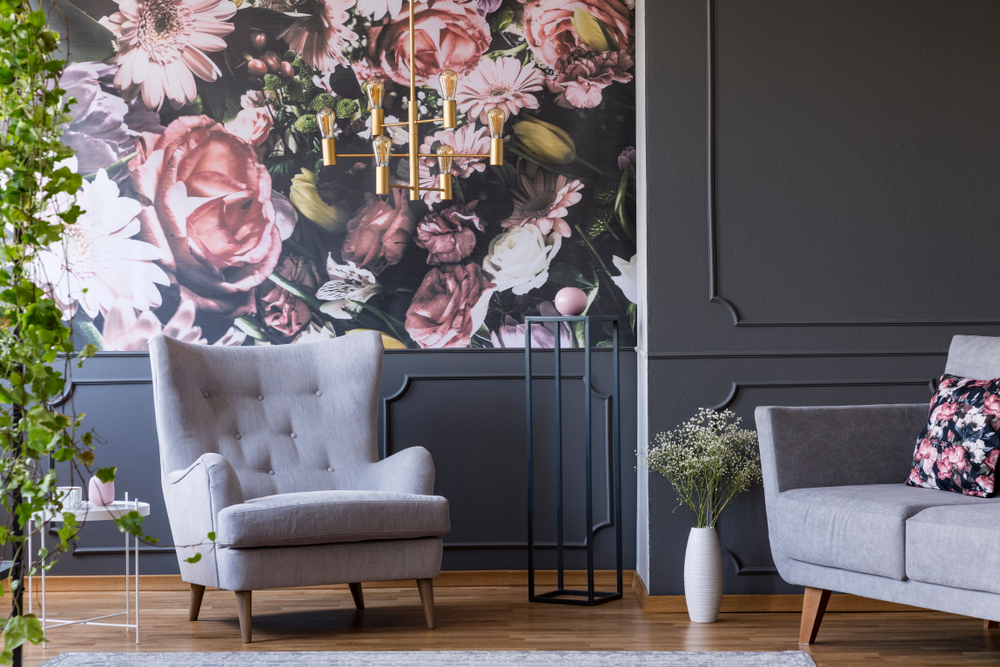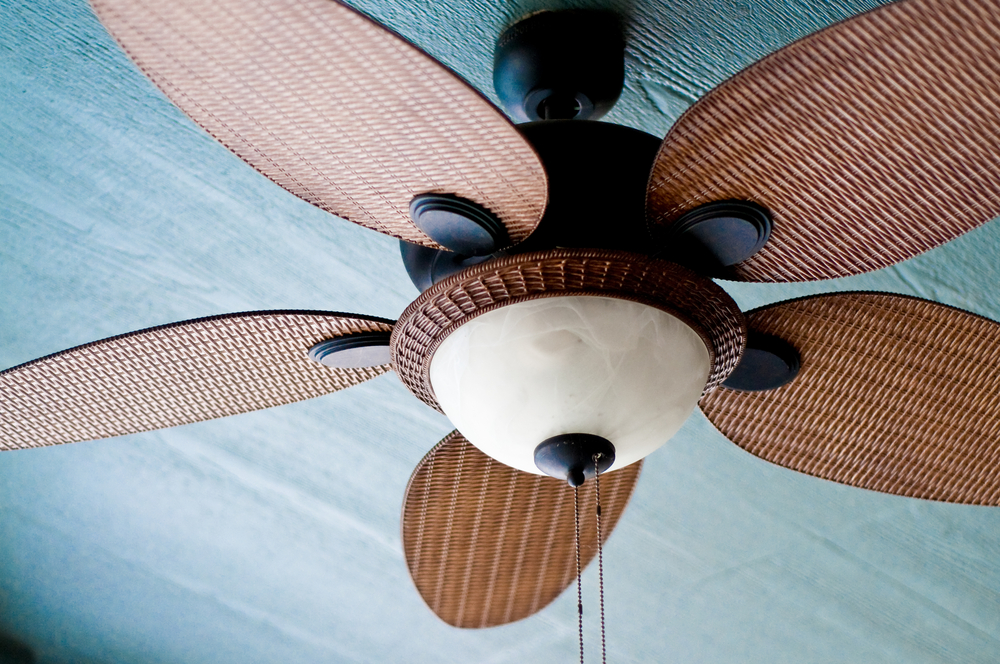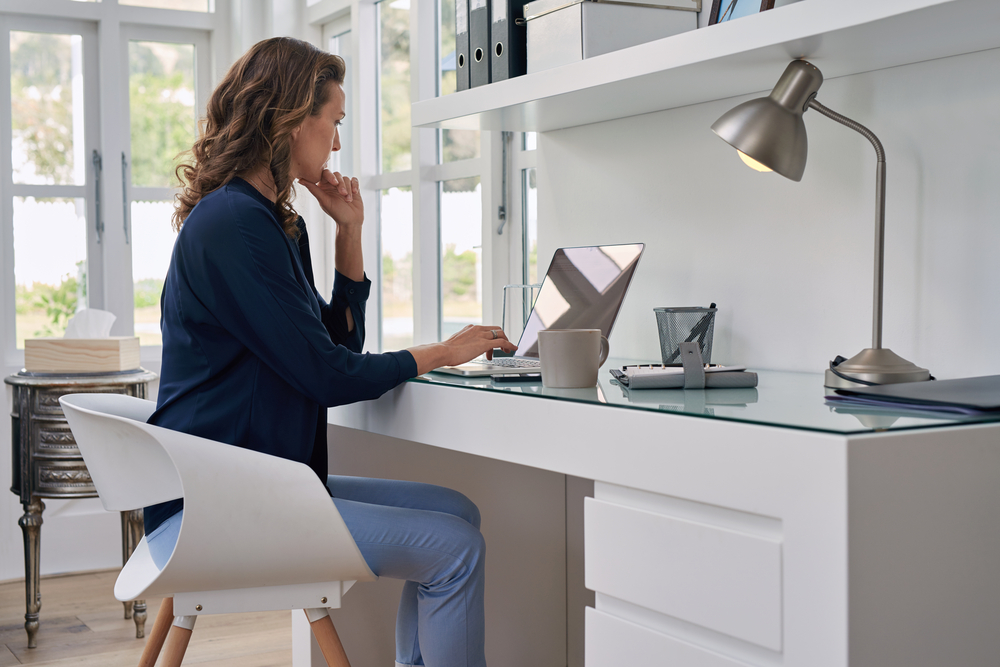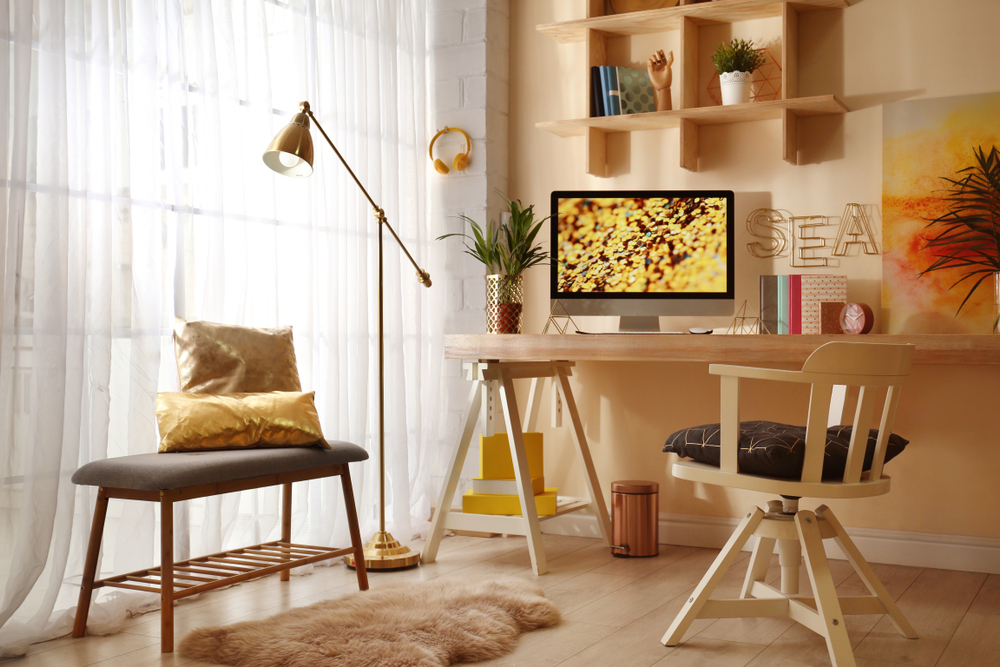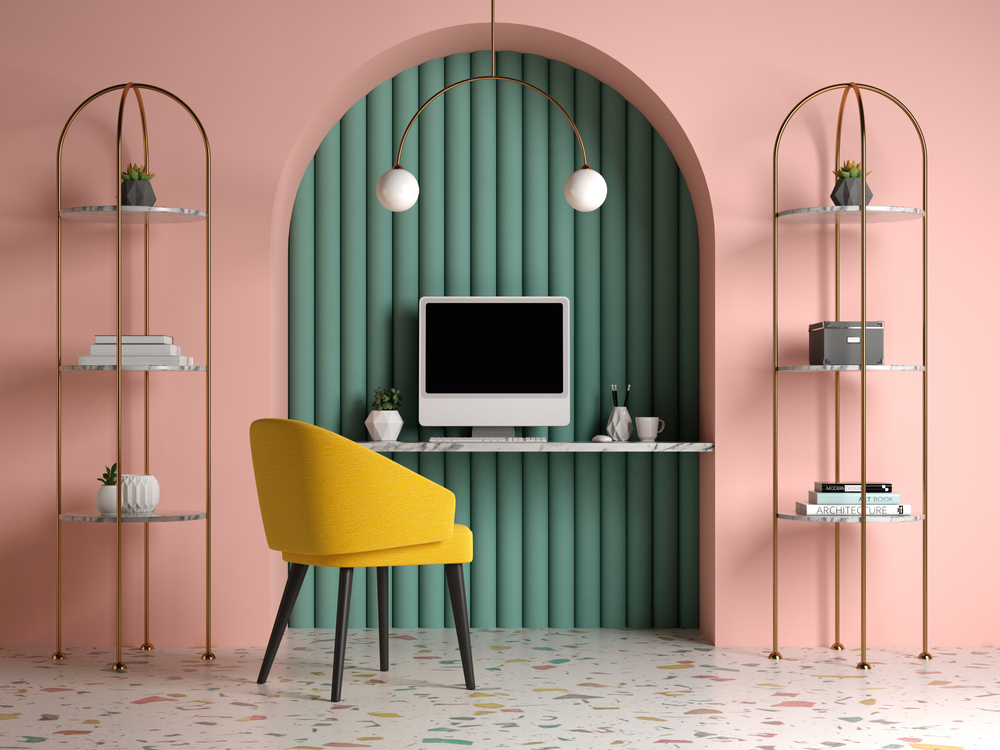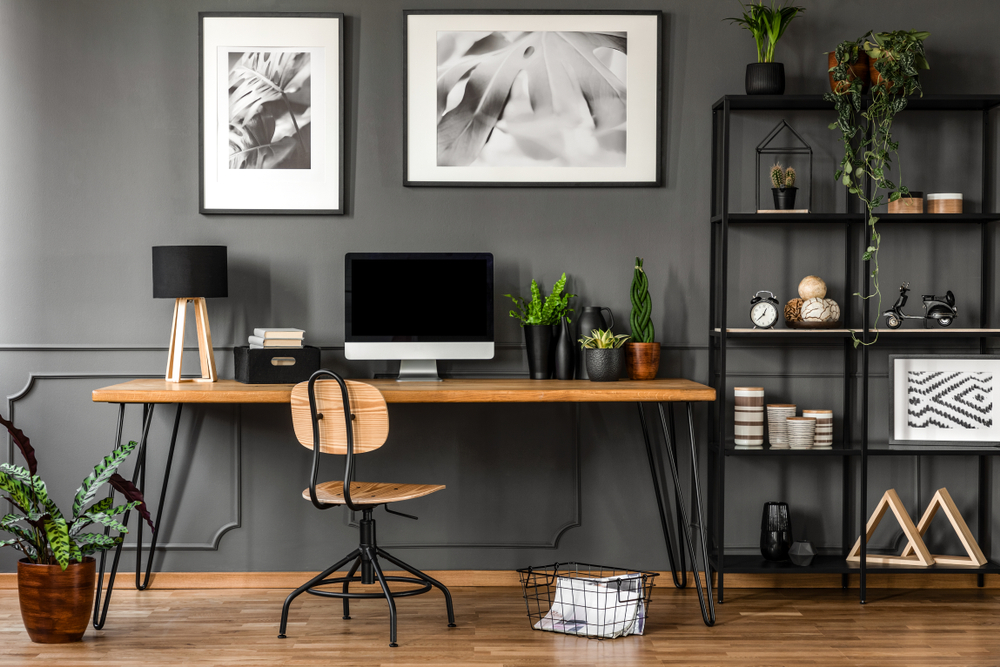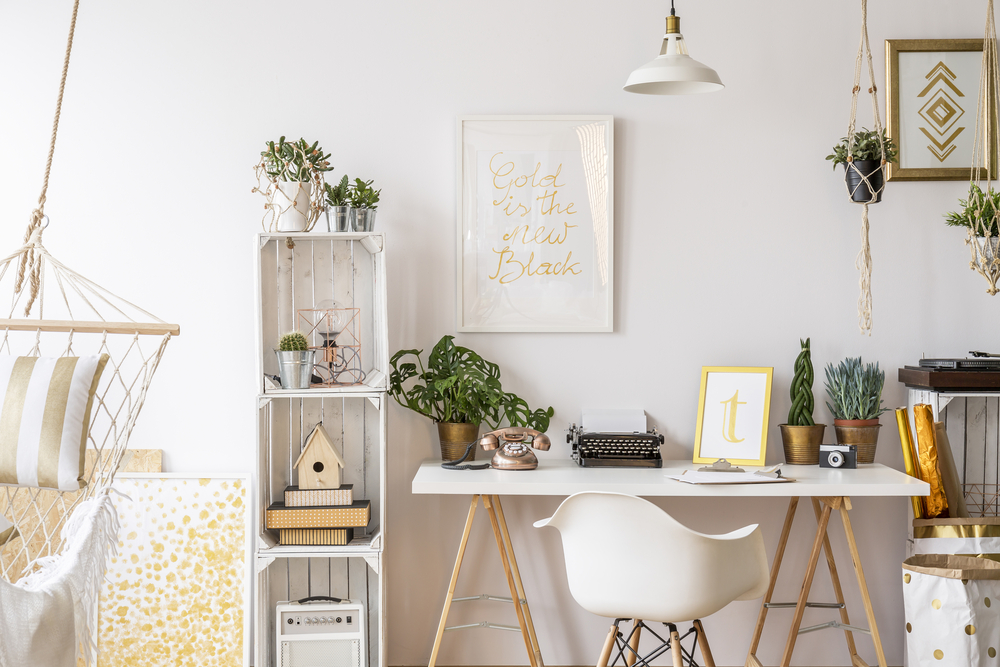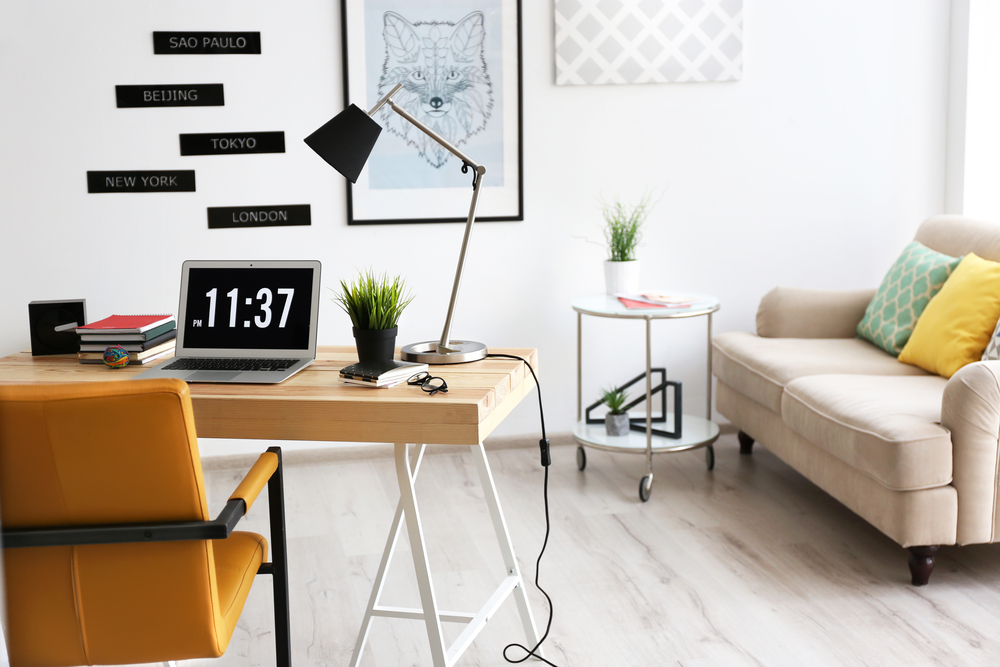Organic Modern – also called contemporary rustic or transitional rustic – is an interior design style that’s become very popular in the last year as people have fallen in and out of love with sleek minimalist and farmhouse chic interiors. Organic Modern interior design is a natural next step – it incorporates the best of the minimalist design aesthetic with the warmth of natural materials. The result is an open and airy space that oozes comfort.
If you’re looking for a way to simplify your farmhouse aesthetic or add some comfort to your minimalist space, we have good news! The shift into Organic Modern is as natural and effortless as these interiors feel.
So what is Organic Modern, exactly? We’ve put together a quick cheat sheet to help you identify the core elements of Organic Modern and find ways to incorporate it into your home.
1. Neutral colors and earthy accents
Organic Modern design is rooted in minimalist design, so keep your color palette neutral – think beige, white, tan, and gray. Keep walls and flooring light and bright to create an airy, clean feeling.
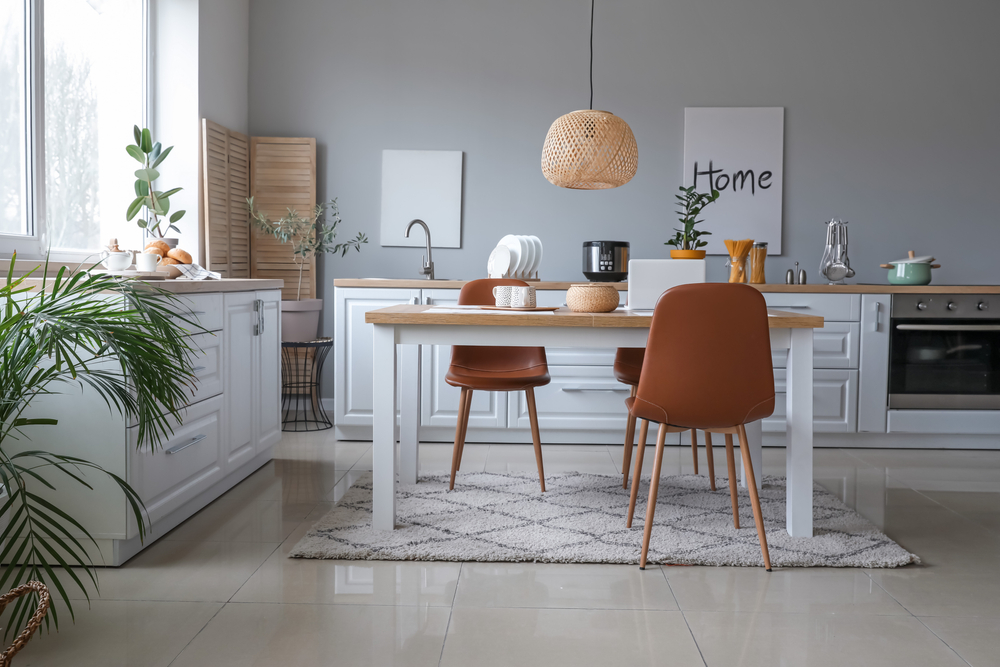
Keep in mind – a neutral palette does NOT mean monotone! Organic Modern design aims to warm up classic minimalist styling, so you’ll often see warm, deep accent colors in natural hues, like green, blue, terracotta, or orange.
Keep in mind that your lighting can change the way your colors look. Organic Modern’s inviting neutral colors often look best in soft, warm light. We recommend buying 2-3 different colors of light bulbs and trying them in your space. You’ll be surprised at how much the colors change!
2. Balance
Organic Modern design strives to strike the perfect balance between sleek and streamlined minimalism and natural shapes and textures.
Achieving this balance isn’t easy, but it’s very important. Be mindful of how many sleek versus organic pieces you incorporate. Pay attention to scale. Scatter organic shapes and textures around your space, but don’t fill it to the brim. Leave plenty of open space to keep that light, airy minimal feel.
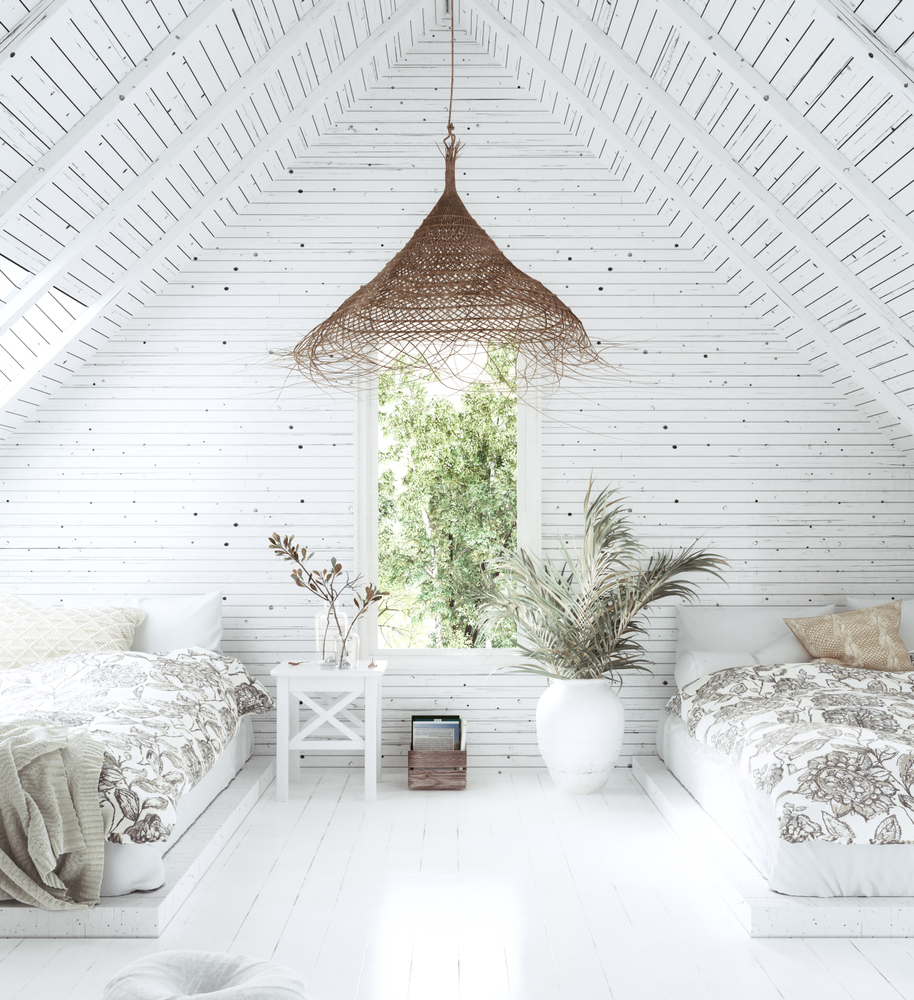
In this attic, they’ve artfully balanced the clean lines of the architectural details with an organic, flowy pendant light, lots of comfy blankets and pillows, and a handful of plants.
Many homeowners forget to budget for lighting when they’re redesigning and end up with something cookie-cutter they can “hide” – but well-thought-out light fixtures are absolutely essential to creating a balanced design.
Finding a jaw-dropping fixture that’s perfect for your space can be a challenge if you limit yourself to what you can find at your local hardware stores. If you stop by our lighting showroom, we have access to thousands of lighting options – and we’d love to help you find that unique fixture that makes your space.
3. Use natural materials
The crowning element of Organic Modern design is the consistent use of natural elements, such as stone, wood, and ceramics… and the shape, finish, and mix of pieces you choose will have a significant impact on how your room feels. Organic Modern design looks best with a mix of shapes, finishes, and materials – just like you’d find on a walk in the woods.
Balance is important here too. Natural materials tend to feel more rustic, so balance them out with modern pieces, like combining a raw-edge wooden dining table with modern seating. Stone vases and lamps introduce an earthy element, but stick to organic shapes over more ornate, traditional styles.

This living room showcases natural materials in all the right ways! The rounded, wooden elements bring the “organic” while the minimalist shape of the sofa and sleek stone fireplace bring the “modern” – married perfectly together to make a cozy Organic Modern space.
4. Bring the outside in with plants
Besides using natural elements in furniture and shapes, one of the best ways to bring Organic Modern design into your home is with plants! You’ll often see many of the same kinds of plants used in mid-century modern design (like palms, figs, and grasses) with a variety of sizes ranging from small shelf plants to larger trees and shrubs on the floor.
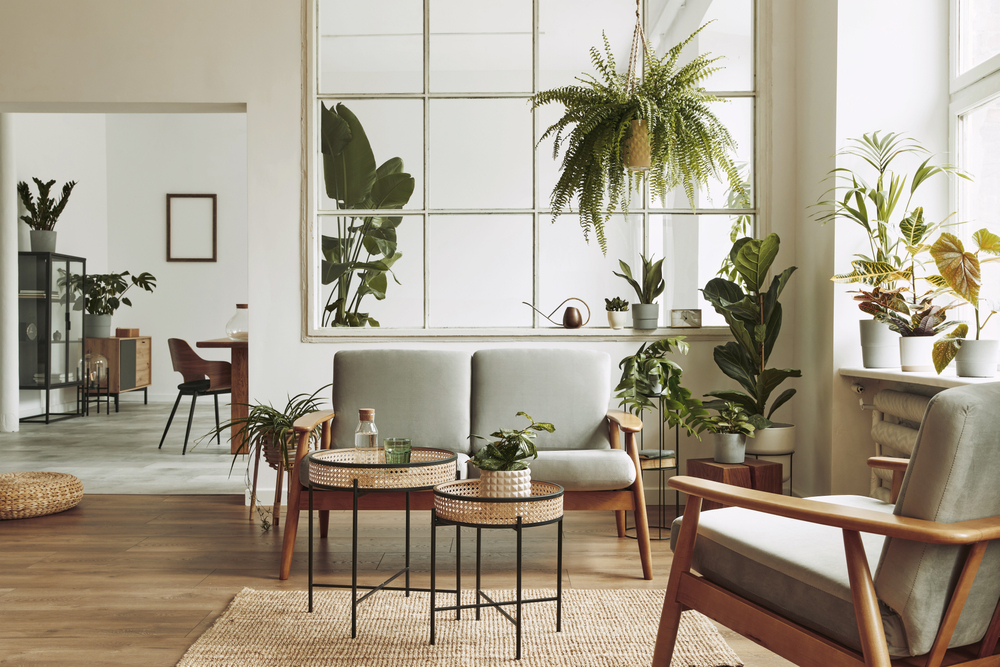
Plants clean your air, lift your mood, and brighten up the space. This homeowner took full advantage of their large windows and really made their plants the star of the design. They’re all in a similar color tone to the design and offer plenty of beautiful organic shapes and textures to balance out the clean lines of the furniture and architecture.
5. Make it yours with unique and handmade pieces
Styling is one of the last steps when designing a space, and it’s the most fun because you can start making it your own! It’s an excellent opportunity to go thrifting, hit up the local flea market, or finally make that unique Etsy art purchase.
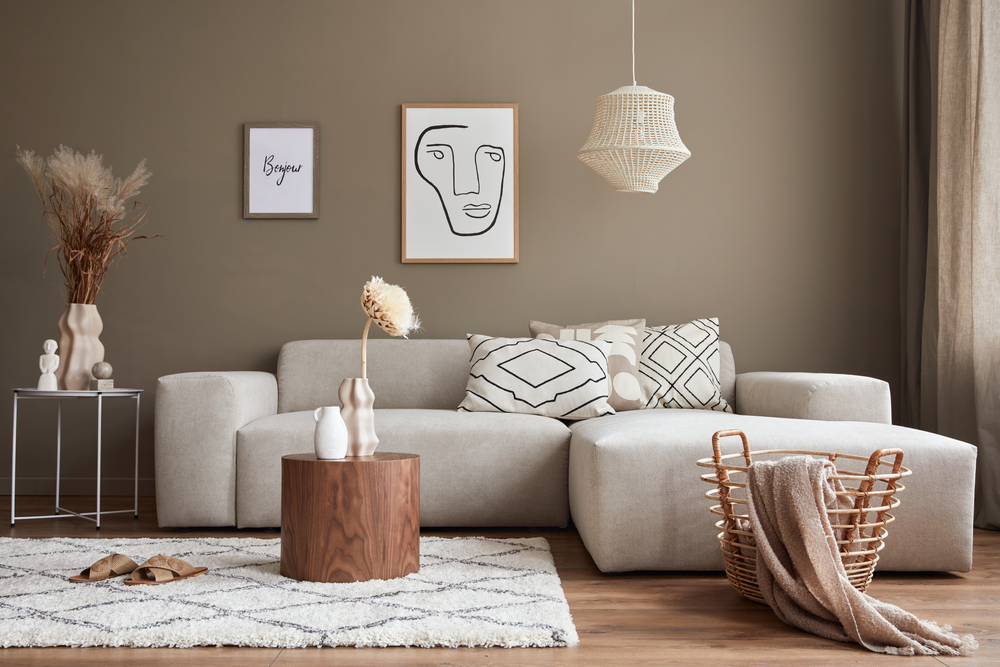
We love how the unique shapes of the vases, prints, and light fixture here give this space so much visual interest without filling it to the brim.
Handmade pieces give your room personality, and they provide new textures and colors that are hard to find in a mass-produced decor store. When you’re looking, stay focused on finding colors and shapes that will highlight the unique balance of clean, modern, and earthy rustic pieces in your space.
Make sure your lighting highlights your unique style! Light a cozy reading nook with your curated novel collection with a modern, organic lamp or pendant light made from natural materials. If you’re displaying your favorite finds on a bookshelf, consider adding a row of LED strip lights on the shelf above them!
6. Prioritize comfort
Organic Modern design is minimalism made comfy. When considering your options, make sure that whatever you choose is comfortable and practical over anything else.
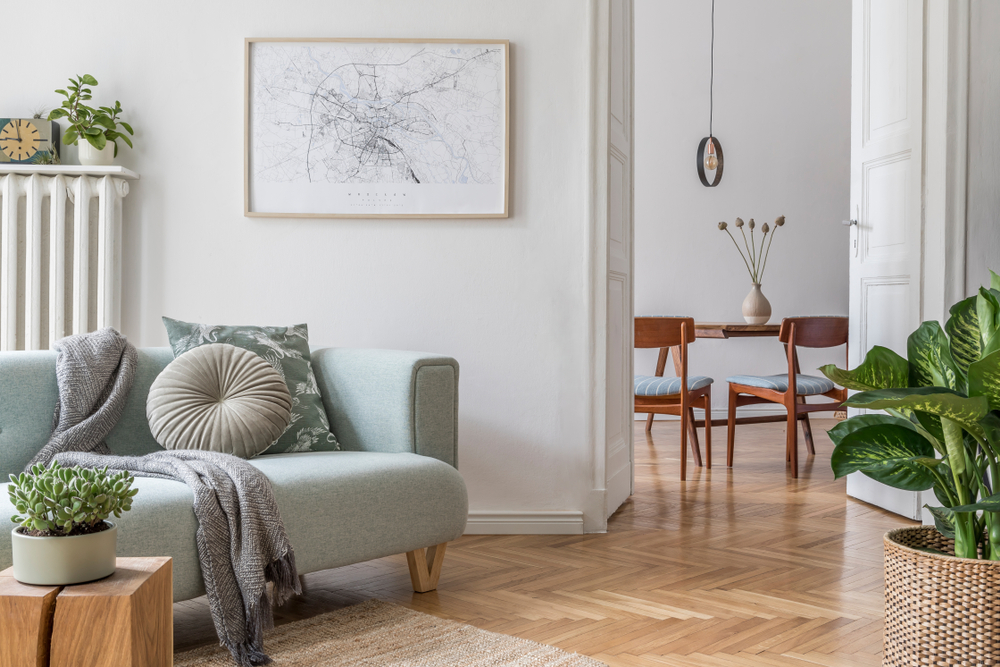
What “comfortable and practical” means will vary from person to person, but here are some suggestions to get you started.
- Low Maintenance – Choose materials that are durable, low-maintenance, and easy to clean. There are plenty of natural materials that fit in this category, like clay, copper, finished wood, and stone.
- Smooth Finishes – Choose materials that are “nice to the touch” – raw, natural edges are beautiful, but make sure they’re in places that won’t snag on guests’ clothes or skin.
- Pillows, Cushions, and Blankets – Create cozy spaces with plenty of soft textures. They’ll create an aesthetic balance against the harder natural materials while making your space so comfortable you’ll want to spend all your time there.
7. A Well-lit Space is a Comfortable Space
Proper lighting is a crucial element of any design project, but it often gets added in as an afterthought. This can cause significant problems for your space. If your finished room has dark corners, it won’t look right or feel inviting. A builders-grade traditional ceiling fixture can throw off the feel of a beautifully curated Organic Modern space.
In the space below, this stunning light fixture brings Organic Modern design to a whole new level. But how do you replicate this in your home? We recommend considering two things when picking out a light fixture: the material choice and breaking tradition.
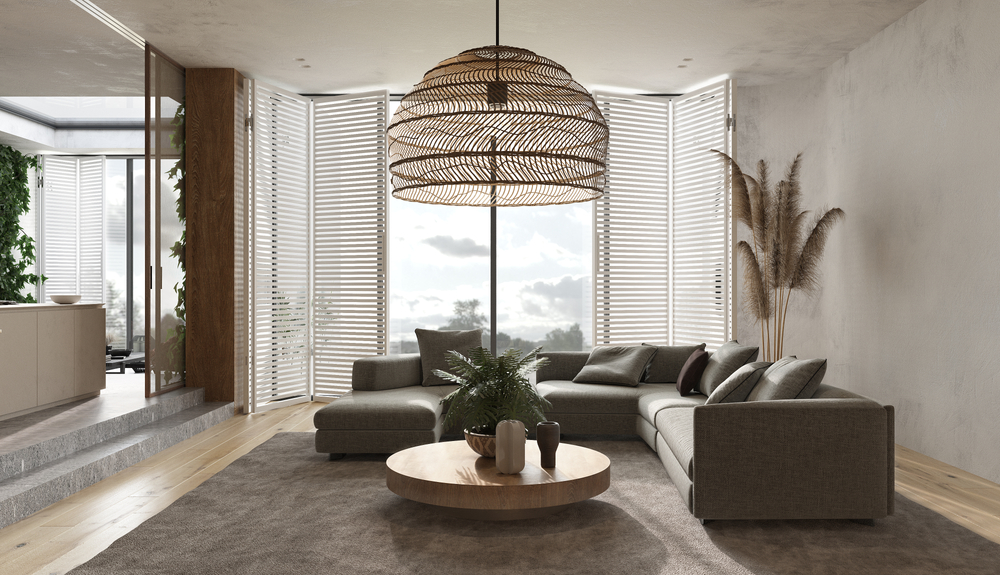
Material Choice
Most default lighting includes stainless steel or brushed nickel and frosted white glass shades. Instead, play with finding fixtures with natural materials for the base or the shade.
You might have a hard time finding anything else at a hardware store, but if you stop by a lighting showroom, they’ll be able to show you a wider selection of modern fixtures.
Consider things like stone lamps that introduce texture, wicker pendants that soften the room, or colored shades that dimension.
Breaking Tradition
Traditional fixtures and placements work, and they’re always a safe bet. But with Organic Modern design, it’s okay to bend the rules to get a less structured look.
Don’t let the fear of a mistake stop you from trying something new. Get that funky fixture you love. Be bold with finishes and colors – great design moments happen when you choose something you love rather than playing it safe.
It’s okay to experiment with unconventional placements too! Try hanging pendant lights over your end tables instead of using lamps. Play with scale and get an oversized fixture (remember to balance your design!).
Just give it a go – you’ll create a more interesting space. Remember – nothing in design is permanent, and your design can grow organically (right along with your houseplants) as you trade things in and out over time.
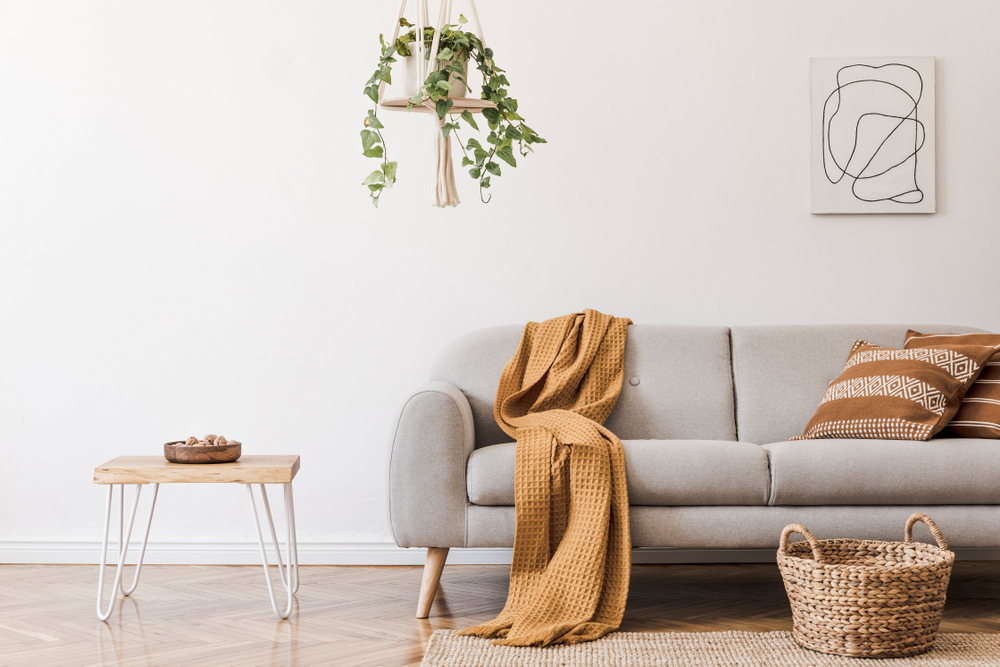
Just remember – the elements of Organic Modern are there to help guide you to a feeling more than anything, and there are no absolutes. So whether your take on Organic Modern borders on eclectic boho or modern with an emphasis on wood and stone, if you feel relaxed and connected, then you’ve created the perfect space for you.
It’s quite the balancing act! We don’t doubt that you’re up for the adventure, but if you’d like to skip the “hours of googling” phase of your lighting selection, let the experts at Western Chandelier do the heavy lifting and help you find what you need!
